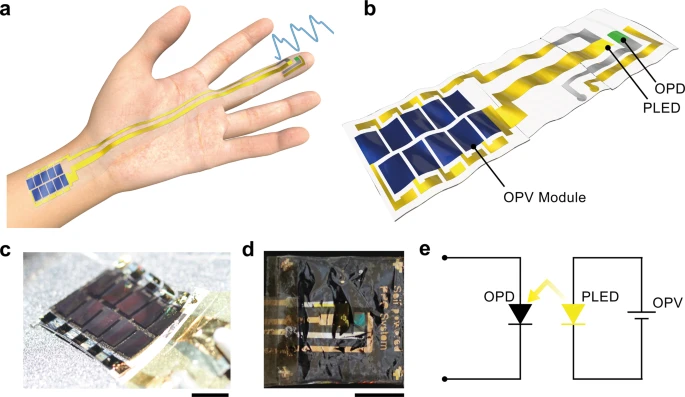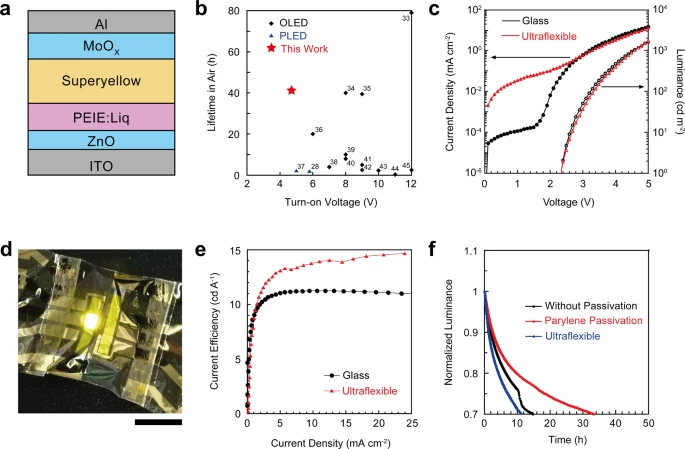

東大:高耐久性ナノシートを開発:皮膚への負担を低減(動画):
Tokyo Univ: Highly durable nanosheets: Reduced burden on the skin:
东京大学:开发出高度耐用的纳米片:减轻皮肤负担
~皮膚貼付け電極で、1週間の心電計測に成功~
2021年09月07日
東大:
◆世界最軽量の皮膚貼り付け電極を開発
皮膚に1週間電極を貼り付けて、高精度に心電図を計測することに成功した。
◆ 電極を伸縮性ナノシート上に作製
電極は、極薄性、高耐久性、高粘着性、通気性をすべて兼ね備えた。
皮膚炎症の原因となりやすい粘着剤を用いずに皮膚に貼りつけ、皮膚への負担を格段に低減できた。
◆健康状態の長期間計測が可能。
今後、医療分野において、病気を早期発見するためのウェアラブルデバイスへの応用が期待される。
本研究成果:
2021年9月6日(米国時間)に米国科学誌「アメリカ科学アカデミー紀要」のオンライン版で公開されます。
日本経済新聞
https://www.nikkei.com/article/DGXLRSP617186_S1A900C2000000/
Self-powered ultraflexible photonic skin for continuous bio-signal detection via air-operation-stable polymer light-emitting diodes
Ultraflexible optical devices
have been used extensively in next-generation wearable electronics owing to their excellent conformability to human skins.
Long-term health monitoring
also requires the integration of ultraflexible optical devices with an energy-harvesting power source; to make devices self-powered.
However, system-level integration of ultraflexible optical sensors with power sources
is challenging because of insufficient air operational stability of ultraflexible polymer light-emitting diodes.
Here we develop an ultraflexible self-powered organic optical system
for photoplethysmogram monitoring by combining air-operation-stable polymer light-emitting diodes, organic solar cells, and organic photodetectors.
Adopting an inverted structure and a doped polyethylenimine ethoxylated layer, ultraflexible polymer light-emitting diodes retain 70% of the initial luminance even after 11.3 h of operation under air.
Also, integrated optical sensors
exhibit a high linearity with the light intensity exponent of 0.98 by polymer light-emitting diode.
Such self-powered, ultraflexible photoplethysmogram sensors perform monitoring of blood pulse signals as 77 beats per minute.
Nature Communications